KAP kites
Introduction
Probably one of the most asked questions by beginners in KAP is “What kite is most suitable for KAP?” Unfortunately there is no simple answer to that question. Since most of us have to stick to a budget and can’t just buy a bunch of kites to cover the complete wind range, I’ll do my best to help you find the kite that works best in the winds typical for the area you live in.
First a little about kites. In general there are two types of kites; the ones with a frame (spars) and those without a frame. Spar-less or ‘soft’ kites have an advantage in portability and robustness but tend to fly at lower angles than framed kites. Framed kites are simpler to manufacture, are more fragile but cost less than soft ones.
To fly a kite for KAP is to place great confidence in its lift and stability, this needs to be gained carefully by understanding the limits of the kite in a variety of wind speeds. All kites have their limits and risking the loss of a rig and camera should not be taken lightly by lifting a camera by a kite flown in an unknown state.
The need for stability means that almost all KAP is done from single line kites. Dual or quad line kite photography requires a highly refined skill set which is rarely successfully applied.
Many KAPers build their own kites to get the size, design and performance they need. Professionally built kites can get expensive and the satisfaction of commanding a place in sky with a self made kite can’t be beat!
KAP is something kite flyers do as photographers and not the other way around, the more confident we are in our kite and our ability to fly it the more pleasurable the experience will be!
“Certainly, when choosing a kite, the first feature is the size according to the wind force and the load of the rig. Then the second feature is driven by the kind of wind which is blowing depending on the geography of the place, which means, even, gusty, with whirls, subject to thermics, etc… So the kite will be the one giving the best response to these conditions. I fly different kites depending on all these. The kite fleet for KAP is slowly increasing.” Christian Becot
Of the many kite designs possible there are kites that KAPers commonly use, despite their expense, because their reputation is well deserved and, once mastered, deliver the lift and stability needed. These are kites which might not fly ‘straight out of your hand’ but once their characteristics are known and accounted for pay back every penny of their cost in terms of catching the view from above. These are ‘specialist’ kites and their production is dependent on a handful of skilled makers so they can be difficult to find.
Dopero, Ralf Beutnagel
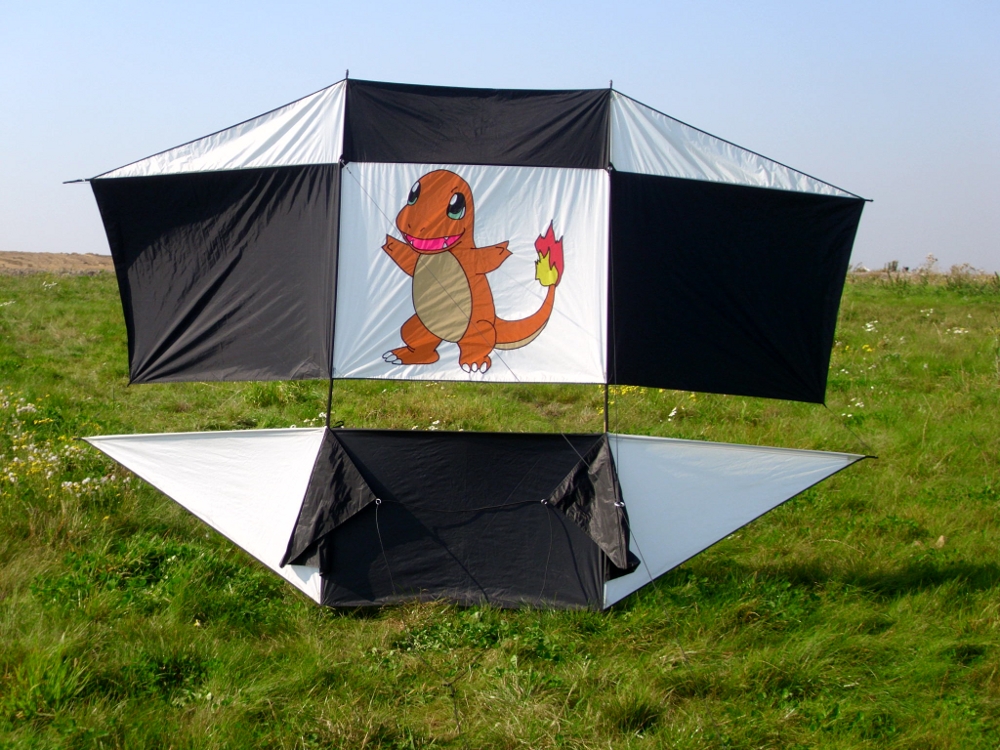
Description
A low wind lifter that behaves like a tethered glider: tricky to fly and quite difficult to live with but, in the hands of a skilled flyer, serves as a lifter when almost nothing else will fly. The size of the Dopero is a direct consequence of the KAP lifting reqirement : the Dopero is 3m wide and the ‘Maxi’ Variant is 3.75 m in wing span.
Developed specifically for KAP by Ralf Beutnagel in 1994 as an evoloution from the 1909 Rolloplan and subsequent 1970 Pearson
Roller designs the Dopero got the best out of the twin sail superlight concept.
“I gave up on the Maxi Dopero, a great kite once in the air but too big and complex to set up…” KAPer Pierre Lesage
| Designation | Type | Lifts | Bft |
| Dopero | Framed twin sail | 1000 g | 1-3 |
Delta R8, Dan Leigh
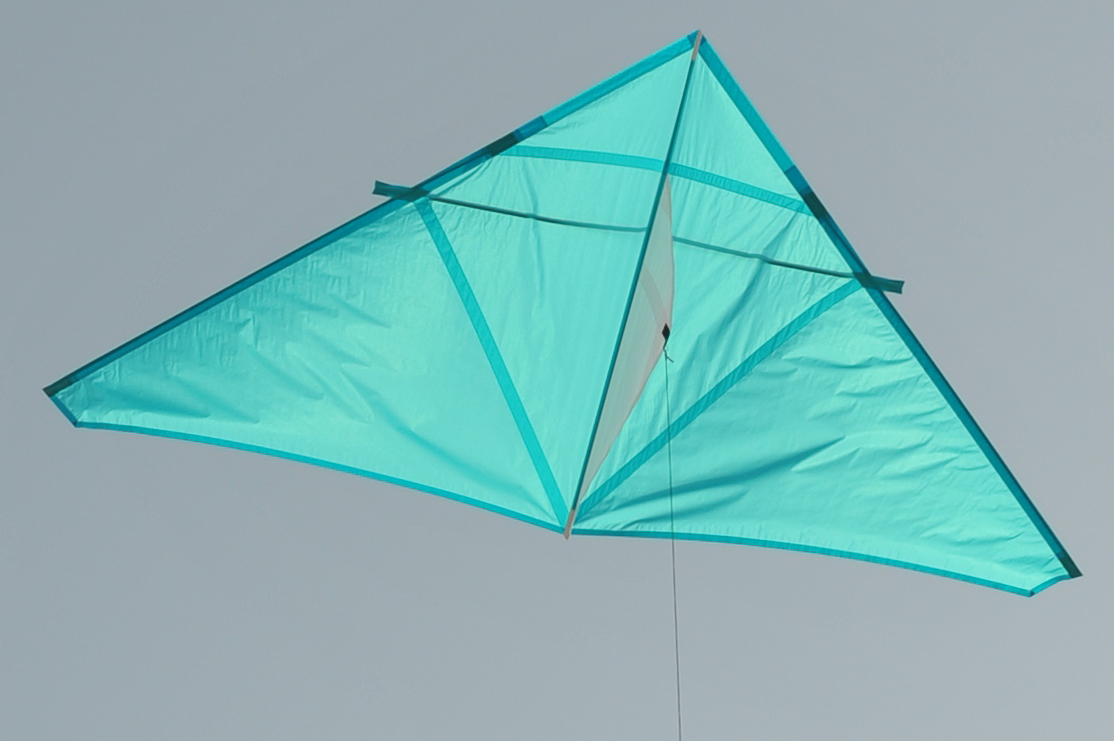
Description
Available in ‘standard’ 520g and ‘light-weight’ 480g formats.
Dan Leighs kites are legendary : they are only made to order and production is entirely by Dan.
“Dan Leigh Deltas for fairly strong winds such as the R8 are extremely well made and inspire confidence; once the spreader is in place, it takes off immediately with a rather steep angle. It is still new and therefore noisy but it’s fun !
Once the rig is attached to the line, the R8 will lift the 900 grams ( almost 2 pounds) rig like a charm without the pull I was used with the flow forms and this is REALLY very comfortable. Once the desired altitude is reached, the delta will remain extremely stable and quite often will drift guided
by the weight of the rig, giving a slack line which can be frightening the first few times but which gives the best situation for KAP i.e ; no vibration and no mouvements.” KAPer Pierre Lesage
“It’s a reliable lifter beyond 4+mph. It can lift a 1kg rig easily in 7mph, and probably more as the wind picks up, but I haven’t flown beyond 14mph, as it gets pretty strong.” KAPer Hussam Qasem
Licenced production of Dans ‘Trooper’ design by Into the Wind has made a higher windspeed version these kites available off the peg.
| Designation | Type | Lifts | Bft |
| Dan Leigh R8 Cruiser | Delta | 900 g | 1-2-3-4 |
Triton-Genki
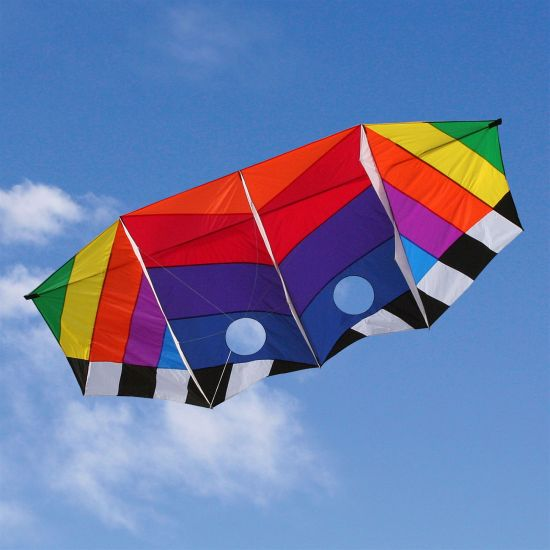
Description
This kite is a large (2.6 x 1.2m) light wind lifter from ‘Into The Wind’ kites; it is a popular light wind option.
“Once I’d adjusted the bridle and put a little extra bow in it, The kite was more or less nailed to the sky. I did have a worry at one point when the kite and rig went almost vertical above me. The wind dropped a little and the line started piling up at my foot. The kite recovered after a few minutes and quickly
took up the slack. I’d did find it a little tricky to handle it on the ground while setting up and breaking it down. The sail area is just so big and the spars look so weak! The wind just wanted to snatch it away from me. Also the bridle arrangement could get into a mess very quickly.”
“The kite has a high aspect ratio with the tendency to overfly at times. Hence the fuzzy tail to keep it from doing that. Adding the camera and the frame helps a bit too.” KAPer Barry Carpenter
This kite’s size can put the delicate spars at risk of splitting at the ends:
“Protect the delicate spar ends by wrapping them with duct tape at the ends of both outer spars where they meet the middle section and on the middle spar, at the inside of the C-shaped clip-on stoppers. I had a stopper coming lose during flight yesterday. Back home I glued it again with some more
cyano-acrylate glue and buffered it with duct tape. Best is to set it up out of the wind. If this isn’t possible, try to assemble it in line with the wind direction and put some heavy stuff on it .” KAPer Ramon Palares
P.S. Inner sleeves can prevent the bars from breaking (internal breakage) at the sleeved points; the inner bars have to be longer than the sleeves used.
(Kite maker and KAPer Peter L.)
| Designation | Type | Lifts | Bft |
| Genki | 4 spar frame | 900 g | 2-3 |
Peter Lynn Pilot

Description
The Pilot is a light wind 4m parafoil from a famous sport kite designer, a budget version from ‘Colours in Motion’ is now available. This kite needs ‘tuning’ to keep it in steady flight and can develop tremendous pull if over-blown. It flies at quite a low angle in the lower wind speeds, steepening to about 60deg at 7mph. It is suscepatable to windshear which can invert it. Very easily upset in wind-speeds over 8mph.
| Designation | Type | Lifts | Bft |
| Peter Lynn Pilot | Parafoil | 900 g + | 2-3 |
Sutton Flowform 30
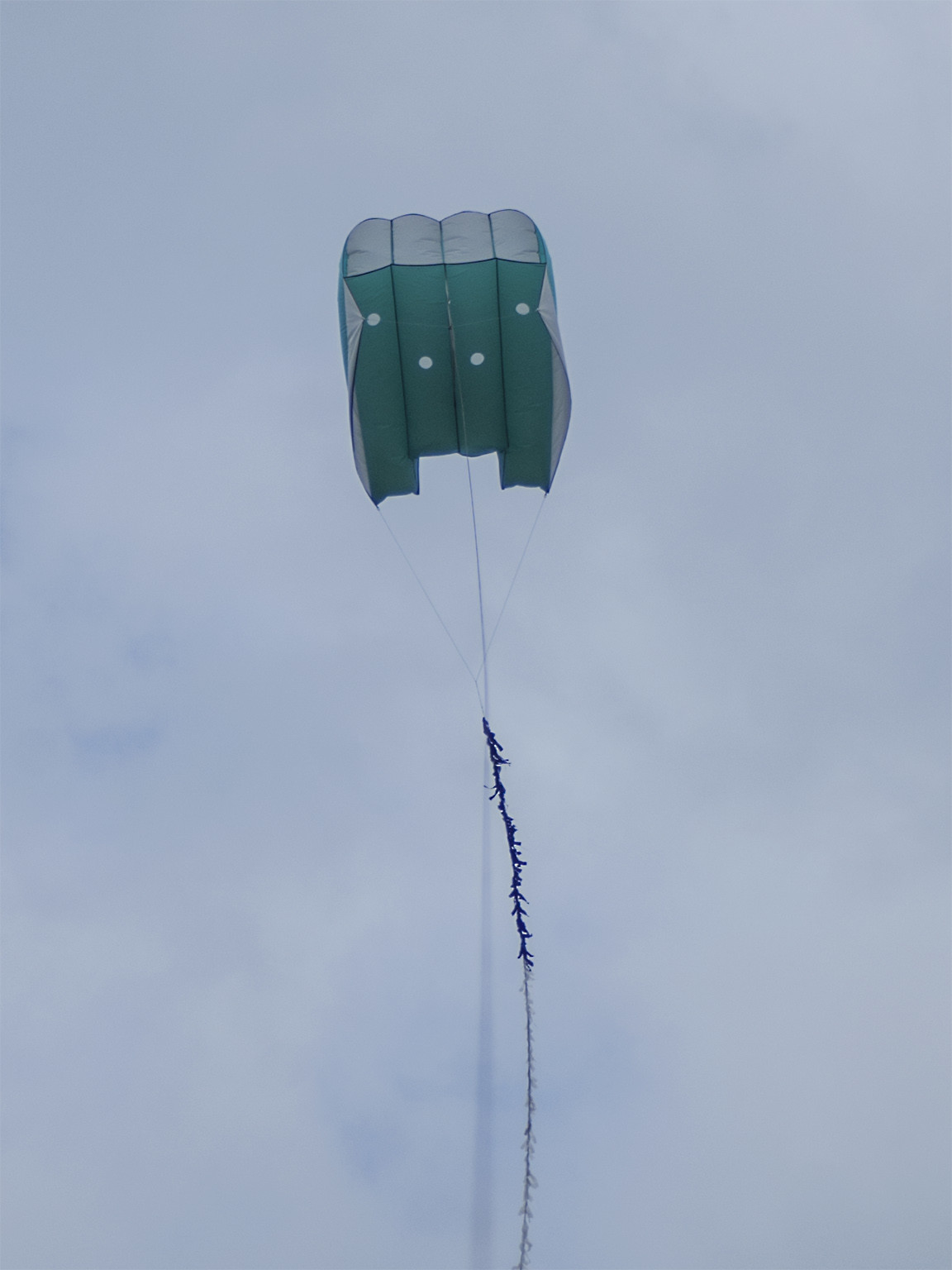
Description
Steve Sutton’s innovative parachute design form the 1980s, no no longer in production in 2012 has been a KAP workhorse for the digital generation.
2.7m (30 square feet) area. Modified by Christain Becot the stability of this kite was ideal for KAP. The principle of allowing airflow through the kite means this kite will absorb wind pressure without instabilty.
| Designation | Type | Lifts | Bft |
| Sutton Flowform 30 | Flowform | 600-900 g | 3-4 |
Rokkaku
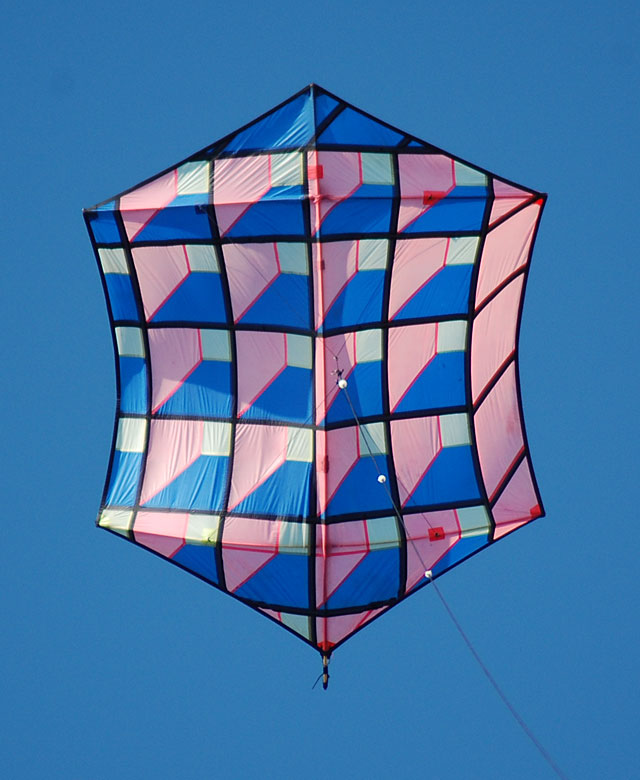
Description
A big Rok (2-3m in height) is a real KAP essential, these kites generate tremendous lift in light winds and (if correctly sparred) capable of flying in Bft 4 provided an appropriate line weight (200DaN) and ground anchor are used.
The Rokkaku is a common pattern of kite but the true lightweights are by custom builders like Jones Aerofoils with carbon fibre spars and a super light rip-stop sail for the best light wind performance.
Big Roks can be a handful at launch and landing as they have a wild short line oscillation- experienced flyers get the knack of keeping the kite out of trouble close to the ground!
“Roks are my go to kite now and I have only had mine for little over a month.” KAPer Jeff Attaway
| Designation | Type | Lifts | Bft |
| Rokkaku | Framed sail | 1500 g | 1-2-3 |
Delta Conyne (DC)
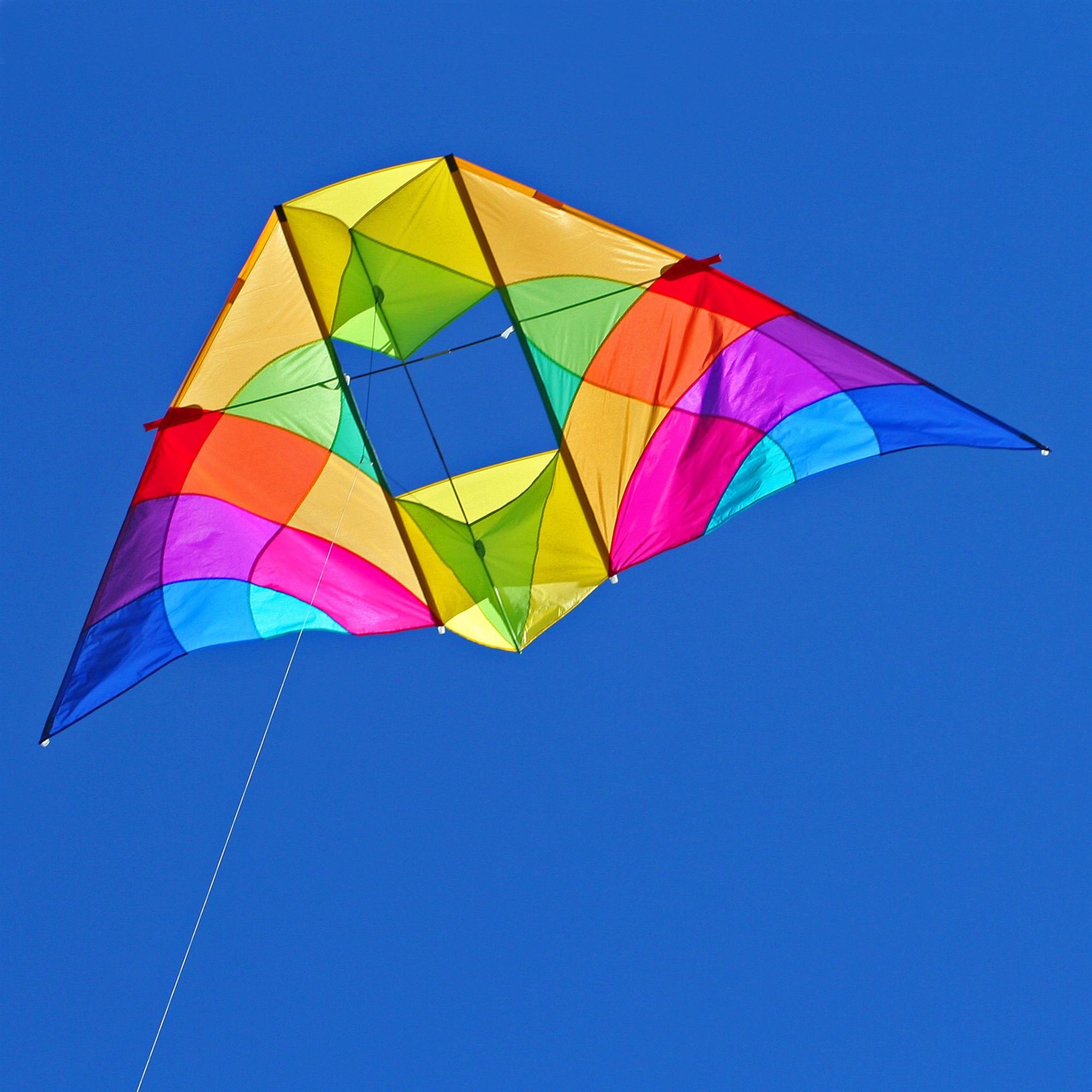
Description
A variation on the popular Edwardian Conyne design, this kite gets the power of the box and the stability of the delta combined. The wingspan is 2.7m.
“Very easy, the easiest kite I’ve flown. Once the kite catches the wind its up. You need gloves and be prepared to be tugged as this is a strong pulling kite. I use webbing straps and carabiners to help hold this kite. A pig tail dog stake will help anchor the kite while you bring it down.”
KAPer Barry Carpenter
| Designation | Type | Lifts | Bft |
| Conyne Delta | Box/delta hybrid | 900 g | 2-3-4 |
Calomil (Christian Becot)
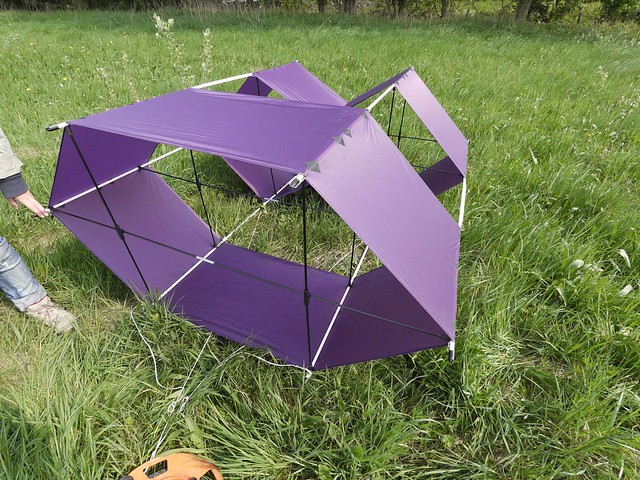
Description
The Calomil is a development by Christian Becot from a series of French military observation kites, it is not in production but is a very stable mid- upper wind speed kite capable of riding steady in buffeting winds without generating excessive pull but lifting a good load easily.
| Designation | Type | Lifts | Bft |
| Calomil | Rhomboid box | 2000 g | 3-4 |
Pauls Fishing Kites Nighthawk
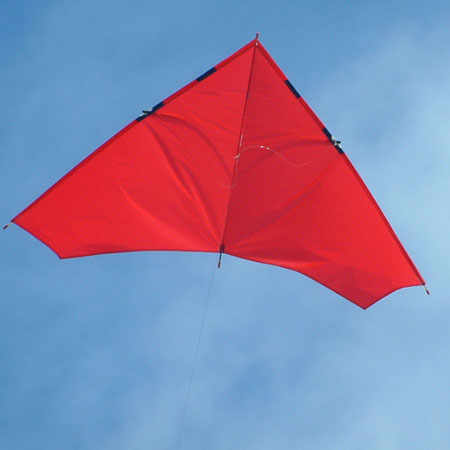
Description
Until this kite was developed KAP in high winds was virtually unknown. Made for off-shore sea fishing in New Zealand this kite is really tough and will fly in Bft6-8. It will survive in winds that destroy most other kites.
The ‘PFK’ or ‘Kiwi’ Kite has become a stock ‘high wind’ kite for KAP the world over. Flying in big winds with the PFK is something of an
adventure and the buffeting movements take some getting used to. Getting it to fly though lulls is often a matter of experiment with line weight.
At the higher wind speeds an AutoKAP aproach works best.
| Designation | Type | Lifts | Bft |
| Paul’s Fishing Kites Nighthawk | Delta | 600-900 | 4-5-6 |